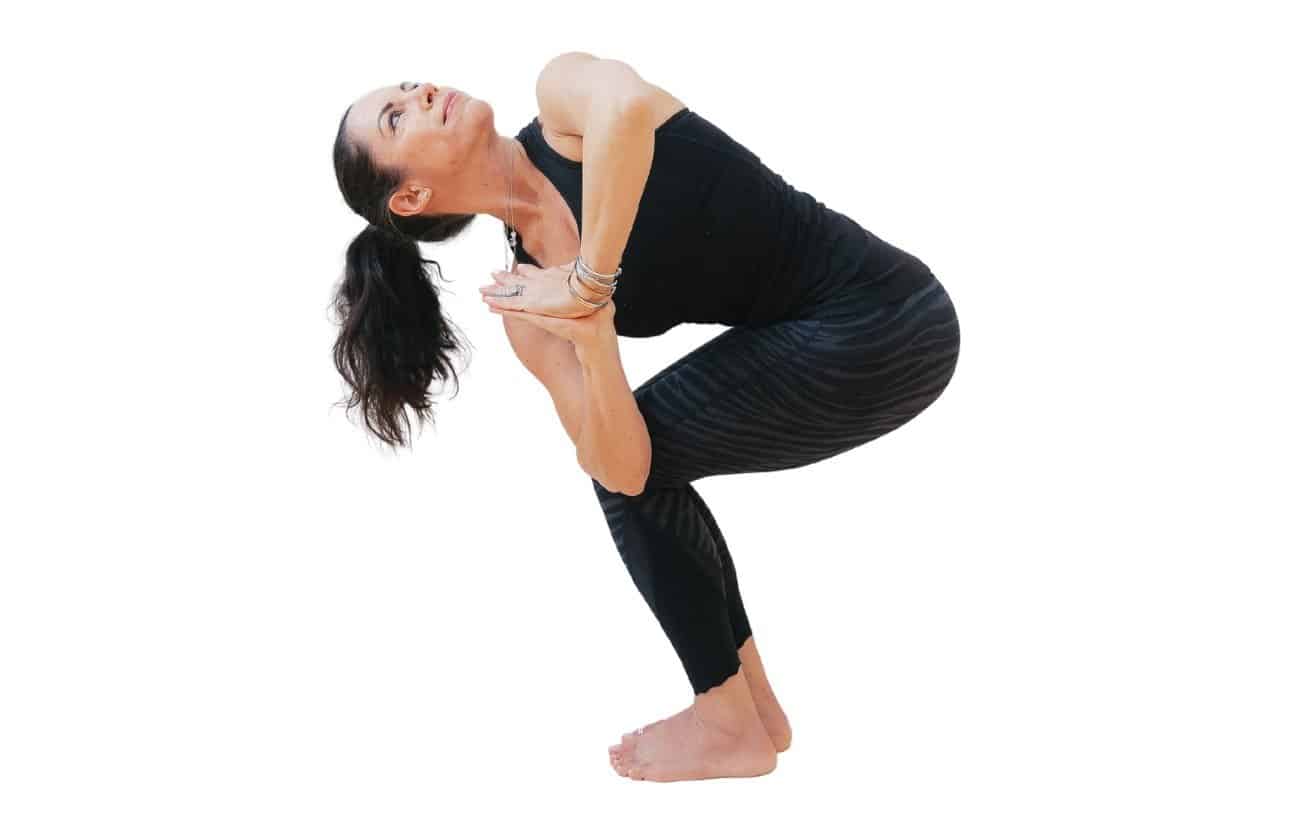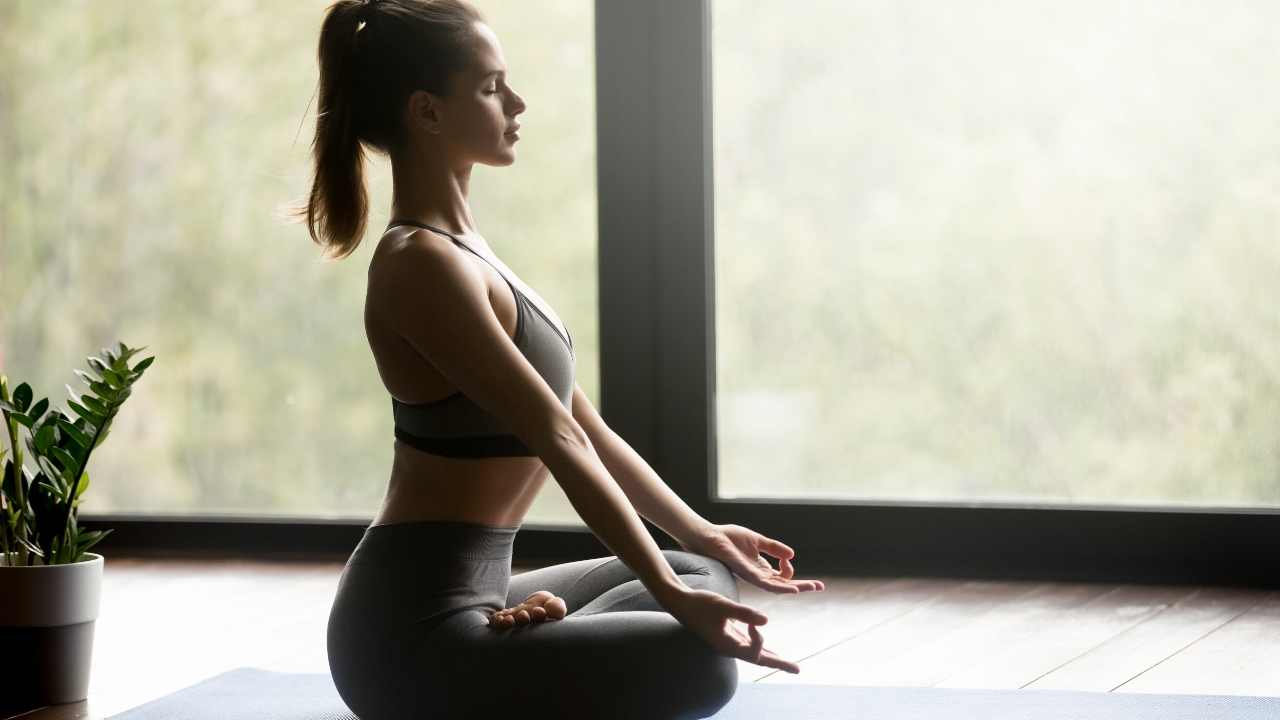
Yoga can be helpful for hypothyroidism for many reasons. It is a journey through the self that helps to reverse the negative effects of hypothyroidism. Many people have thyroid disorders. Thyroid disorders can cause a slowing down of metabolism, growth, or a decrease in body temperature. Yoga can help you prevent or control symptoms of a thyroid disorder.
Yoga poses are a great way to promote thyroid health. The basic fish and downward facing dog pose will stimulate the thyroid gland, and help promote overall health. Cobra pose is a restorative, non-stressful inversion that does NOT put pressure on the neck. For support, you can use a blanket or pillow to help you in this pose. Begin by placing your right foot against the wall, and then bend your legs to the right, allowing your palms to press down on your neck. Once you feel comfortable with this pose, inhale deeply and continue to look.

Next, we will be referring to the wheel position. This is one of yoga's most popular poses for hypothyroidism. This position is designed to increase blood flow to the thyroid. By bending your knees, and keeping them flexed at the same time, this can be done. In addition, this pose strengthens the abdominal muscles and calms the nervous system. The seated bow position is a great pose to keep in mind while receiving treatment for hypothyroidism.
Asanas for hypothyroidism include the upward bow pose, or Urdhva Dhanurasana. This pose can be helpful for back pain sufferers as it provides energy to the gland. However, this pose should not be done with straight arms if you suffer from hernia, and it is not recommended for those with back aches. This pose requires that you bend your elbows.
For people suffering from hypothyroidism, shoulderstand is a very popular yoga pose. This inversion increases blood flow to the thyroid and is thought to improve the efficiency of your thyroid. Additionally, the function of your thyroid is improved by tucking you chin in towards the chest. For shoulderstand you must lie on your back, flat on the ground. Your hands must be by your side as you press down into the floor.

Camel pose is an effective position that increases blood circulation to the thyroid and the neck. It can be held for up to one minute, depending on the practitioner. To do the pose, you must be able stand straight with your knees aligned, hold the pose for at least one minute, and then breathe deeply. Ideally, you should be able to hold this pose for three minutes.
FAQ
Increase immunity with herbs or supplements
To boost immunity function, herbs and natural remedies are available. Examples include ginger, garlic and oregano oils, echinacea, vitamin C, ginkgo loba, and echinacea.
These herbs should not be considered as a substitute for conventional medical treatment. Side effects can include nausea, dizziness, stomach cramps and dizziness.
What is the difference in calorie and kilocalories?
Calories are units used to measure the amount of energy in food. A calorie is a unit of measure. One calorie contains the energy needed to raise the temperature of one gram of water by one degree Celsius.
Kilocalories refer to calories in another term. Kilocalories are measured in thousandths of a calorie. For example, 1000 calories equals one kilocalorie.
What is the difference of fat and sugar?
Fat is an important energy source, which comes from food. Sugar is a sweet substance found naturally in fruits and vegetables. Both fats and sugars provide the same number of calories. Fats however, have more calories than sugars.
The body stores fats and they can lead to obesity. They can lead to cholesterol buildup in the arteries, which could cause heart attacks or strokes.
Sugars are quickly absorbed and provide instant energy. This causes blood glucose to rise. High blood glucose levels are dangerous as it can increase the likelihood of developing type 2 diabetes.
Is cold an indication of a weaker immune system?
There are two types of people in the world: those who love winter and those that hate it. You might wonder why you feel so miserable in the cold, no matter how much you love or hate winter.
The reason is simple: Our bodies are made to function well in warm temperatures. In fact, we evolved to thrive in hot climates because that's where most of our food sources are located.
Now, however, we live in a completely different environment to how our ancestors lived. We spend a lot more time indoors, and are often exposed at extreme temperatures (cold and hot), and we eat processed foods over fresh.
Our bodies don't have the ability to tolerate extremes. It means that when we do go outdoors, we are often tired, sluggish or even sick.
There are ways to combat these effects though. Keep your body hydrated. Drinking plenty of water will help you keep your body hydrated and flush out toxins.
You must also ensure that you are eating healthy foods. Eating nutritious foods helps your body maintain its optimal temperature. This is particularly helpful for anyone who spends long periods of time inside.
Consider taking a few moments each morning to meditate. Meditation helps you relax your mind and body, which makes it easier to deal with stress and illness.
Statistics
- This article received 11 testimonials and 86% of readers who voted found it helpful, earning it our reader-approved status. (wikihow.com)
- In both adults and children, the intake of free sugars should be reduced to less than 10% of total energy intake. (who.int)
- WHO recommends reducing saturated fats to less than 10% of total energy intake; reducing trans-fats to less than 1% of total energy intake; and replacing both saturated fats and trans-fats to unsaturated fats. (who.int)
- WHO recommends consuming less than 5% of total energy intake for additional health benefits. (who.int)
External Links
How To
How to Live a Healthful Lifestyle
A healthy lifestyle is one in which you are able maintain your weight and health. It is a lifestyle that emphasizes healthy living. This includes exercising regularly, eating well, avoiding alcohol, smoking, tobacco, and drug abuse. Healthy living can help you feel better about yourself and keep you fit. In addition, a healthy lifestyle reduces your risk of chronic diseases like heart disease, stroke, diabetes, cancer, osteoporosis, arthritis and many others.
The primary goal of this project was provide a step to help people live a healthier lifestyle. The introduction of the project was the first. This describes what a healthy lifestyle looks like, why it is important, and who it is. The body paragraphs contain tips on how to maintain a healthy lifestyle. The conclusion summarizes the article and offers additional resources if necessary.
This assignment helped me to understand how to write concise paragraphs. Also, I learned how to organize my ideas into topic sentences and supporting details. Additionally, I learned how to organize my ideas into topic sentences and supporting details. Finally, I learned how to properly use grammar when writing.